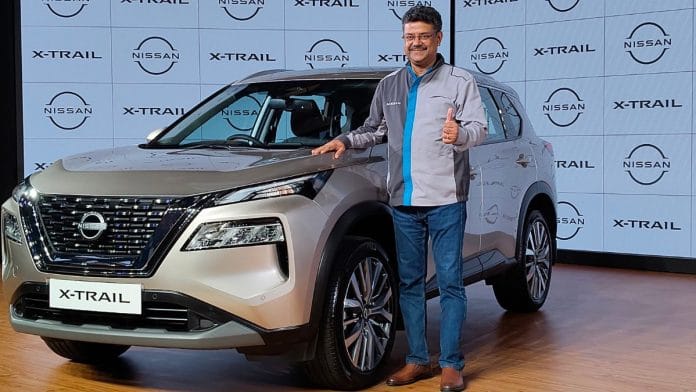In 2010, Ranbir Kapoor was a rising star in Bollywood when Japanese automaker Nissan signed him as their brand ambassador ahead of the launch of the Micra hatchback. The company, which had entered the Indian market in 2005 and was looking to expand its footprint, wanted to emphasise the ‘cool’ factor of a small car to Indian consumers.
Roping in young Bollywood stars to launch car brands in India has been a tried and tested method. For instance, look at the successful partnership between Shah Rukh Khan and Hyundai.
Fast forward a decade and a half, and Ranbir Kapoor is now a father who is taking on more controversial and violent film roles. He is clearly a successful Bollywood actor today. On the other hand, Nissan is selling only a few thousand units of their Magnite small SUV every month.
Nissan India has recently introduced a new product, which I test-drove and discussed with the company’s new head, Saurabh Vatsa. Before we get into that, let’s look at how the Japanese carmaker has become a minor player in India.
Nissan’s plans
Nissan’s situation was not always like this. In the mid-2010s, Nissan and its alliance partner, French carmaker Renault, had high hopes for the Indian market. Carlos Ghosn, then CEO of both companies, had championed the Indian market by launching the Datsun brand to offer affordable cars. However, Ghosn’s tenure ended in scandal, with his ouster, arrest, and dramatic escape from Japan becoming the stuff of legend.
The failure of Datsun meant that the Indian market lost one of its greatest cheerleaders while Nissan sort of wallowed around. The launch of the Magnite aimed to compete with the Maruti Suzuki Brezza but suffered due to non-existent marketing and a poor retail network. The Datsun Go and its variants were phased out in 2023, and Nissan decided to kill the brand.
Nissan’s large multi-billion-dollar manufacturing facility near Chennai, shared with Renault, could not sustain the company forever through exports alone. With a new management team in place, Nissan now has big plans for India in the coming years.
Vatsa, managing director of Nissan Motor India, said that the company has clear plans for the next two years, focusing on SUV offerings. Two ‘Made-In-India’ C-segment SUVs—a five-seater and a seven-seater—will likely be launched around 2025-26, based on the new Dacia Duster platform. Additionally, a ‘Made For India’ small electric SUV and a significant update for the Magnite are also on the cards.
“Our mid-term plans are well-defined now. We have made substantial investments and will expand our production facilities to start making left-hand drive versions of the cars we produce for India,” said Vatsa.
He added that the number of countries Nissan exports to from India will increase from 15 to 40. To boost domestic sales, Nissan India is ramping up its reach, planning to grow its network from 272 to 300 touchpoints by the end of March 2025.
To start, Nissan is bringing the fourth-generation X-Trail to India as a Completely Built-Up (CBU) unit from Japan. So, how does it drive?
Also read: BMW 5-Series stretches itself by 11 cm—and trades performance for comfort
Falling short
The X-Trail, features a unique variable-compression engine that uses a mechanical system to adjust how much the piston compresses the fuel-air mixture before ignition. The company claims that this system enhances both power and fuel efficiency from the 1.5-litre three-cylinder engine, which produces 164 horsepower, proving that innovation in internal combustion engine technology is far from over.
Using a mechanical system, the engine can vary the compression ratio depending on the amount of power the driver needs. This, coupled with a turbocharger, allows the engine to produce better power. In comparison, the same engine in the US-spec Nissan Rogue is tuned to produce 201 horsepower.
On the Delhi-Mumbai Expressway, the X-Trail accelerates smoothly and has a brilliant CVT (continuously variable transmission) gearbox that doesn’t let you notice gear shifts On city roads, the X-Trail feels very pleasant to drive, with the suspension effectively handling the monsoon potholes.
Regarding the X-Trail’s fit and finish, there are some concerns. I have no clue how they’re going to be able to sell this car.
In terms of the positives, while the car has a panoramic sunroof and a functional third row suitable for pre-teens, its eight-inch infotainment screen, fabric seats, lack of a premium audio system, non-electrically adjustable front seats, and absence of Advanced Driver Assistance Systems (ADAS) are off-putting.
This car is rivalling the likes of the Hyundai Tucson and Skoda Kodiaq. And while these two vehicles are assembled in India and thus enjoy a price advantage, they also offer a lot more features than the X-Trail.
The X-Trail is also likely to compete with the much larger Toyota Fortuner. This brings me to its price. Nissan just announced that the X-Trail has an introductory price of Rs 49.92 lakh.
Other than the very top Gazoo Racing variant of the Toyota Fortuner, the X-Trail is far more expensive than all its peers. For context, the petrol two-wheel drive variant of the Hyundai Tucson Platinum starts at Rs 29 lakh, and is better equipped. While Tucson has slightly lower power and fuel economy, shelling out Rs 20 lakh extra for the X-Trail makes no sense. Interestingly, the fully-loaded top-end diesel variant of the 4×4 Tucson is Rs 15 lakh cheaper than the X-Trail. The Skoda Kodiaq, meanwhile, costs Rs 10 lakh less than the Japanese SUV.
The Nissan X-Trail is a perfectly good vehicle, but had to scale down on its features in a competitive market. Hopefully, Nissan can get its game together in India, but the X-Trail is not the ideal starting point for this reinvention.
@kushanmitra is an automotive journalist based in New Delhi. Views are personal.
(Edited by Aamaan Alam Khan)







49 lakh for this scrap is really a joke. People like me will flip the bird at Nissan.